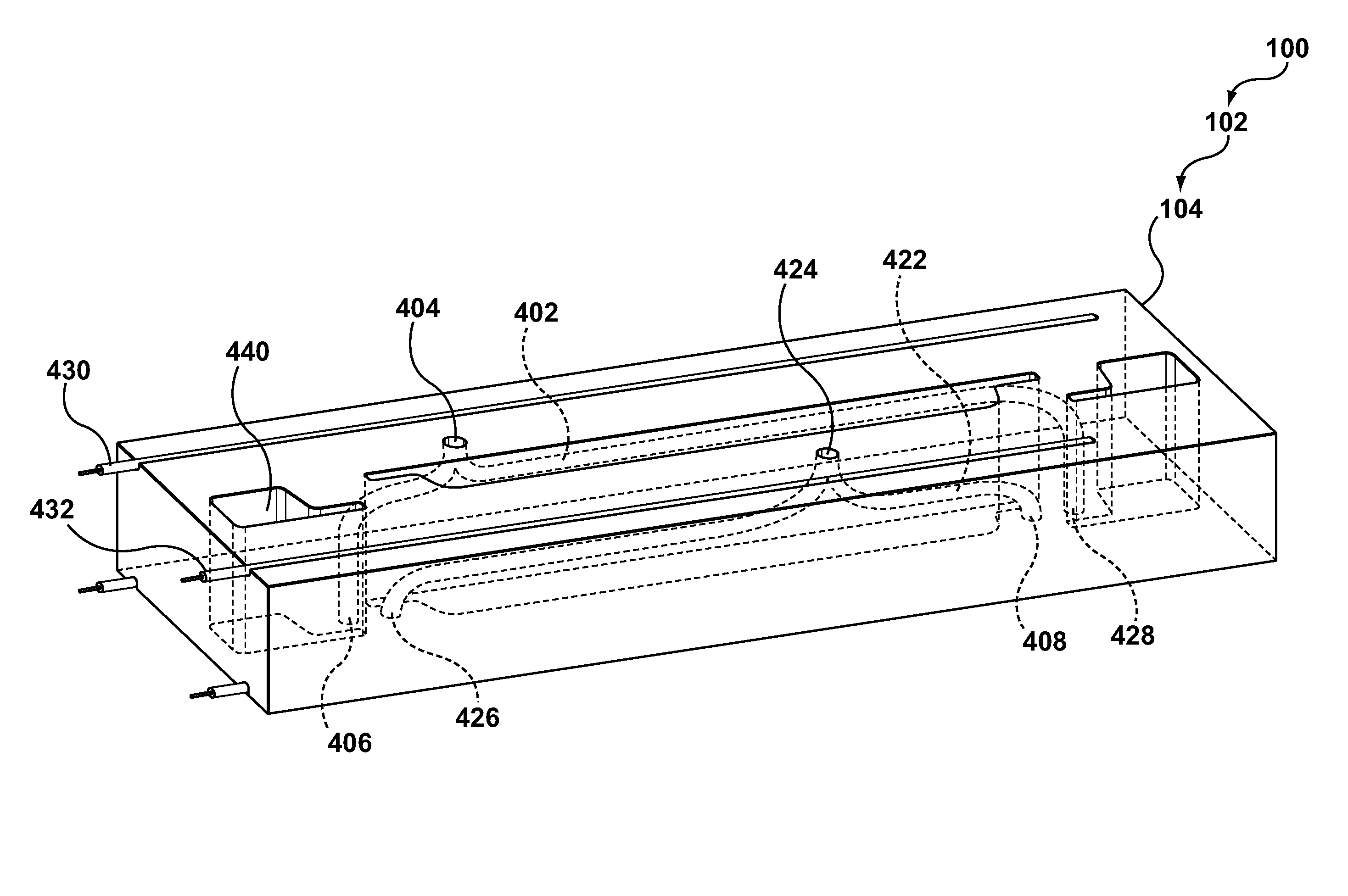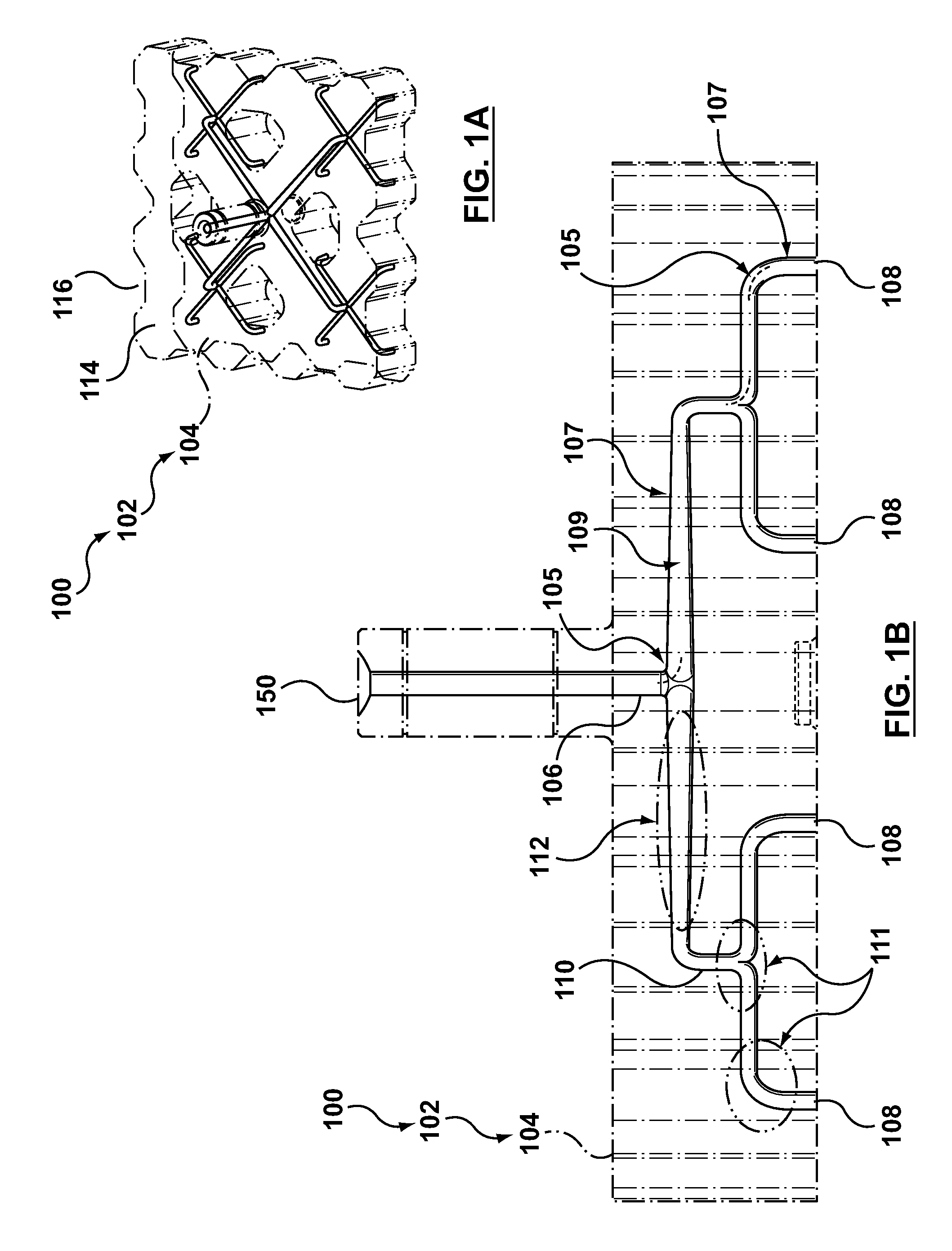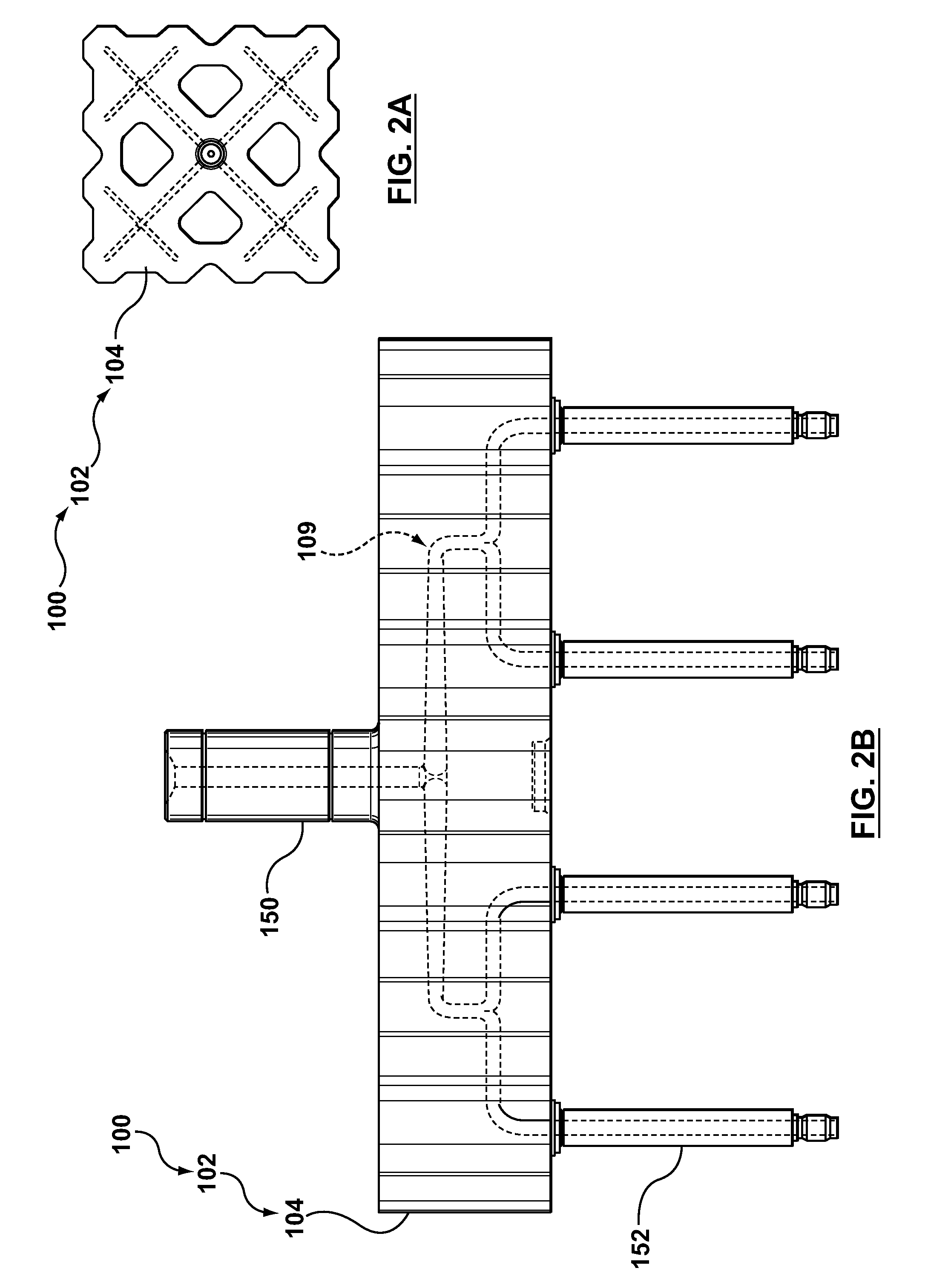Hot-Runner System having Manifold Assembly Manufactured in Accordance with Free-Form-Fabrication
a free-form manufacturing and manifold technology, applied in the field of hotrunner systems, can solve the problems of high production cost, prone to cracking, high flammability, and more clamp tonnage to hold the mold closed, and the limited number of manifolds manufactured in this fashion
- Summary
- Abstract
- Description
- Claims
- Application Information
AI Technical Summary
Problems solved by technology
Method used
Image
Examples
Embodiment Construction
)
[0034]FIGS. 1A and 1B depict a schematic representation of the hot-runner system (100). The hot-runner system (100) includes (but is not limited to): a manifold assembly (102). The manifold assembly (102) includes (but is not limited to): a manifold body (104) defining a melt channel (109, 110) being smooth-flowing, direction-changing and uninterrupted. An example of a manufacturing method for making the manifold body (104) is to use a solid freeform fabrication. The manifold body (104) may be manufactured, at least in part, in accordance with an additive manufacturing fabrication process, which may also be referred to as a “solid free-form fabrication process”. Solid freeform fabrication is a collection of techniques for manufacturing solid objects by the sequential delivery of energy and / or material to specified points in space to produce that solid. SFF is sometimes referred to as rapid prototyping, rapid manufacturing, layered manufacturing and additive fabrication. It will be ...
PUM
| Property | Measurement | Unit |
|---|---|---|
| Diameter | aaaaa | aaaaa |
| Length | aaaaa | aaaaa |
| Diameter | aaaaa | aaaaa |
Abstract
Description
Claims
Application Information
 Login to View More
Login to View More - R&D
- Intellectual Property
- Life Sciences
- Materials
- Tech Scout
- Unparalleled Data Quality
- Higher Quality Content
- 60% Fewer Hallucinations
Browse by: Latest US Patents, China's latest patents, Technical Efficacy Thesaurus, Application Domain, Technology Topic, Popular Technical Reports.
© 2025 PatSnap. All rights reserved.Legal|Privacy policy|Modern Slavery Act Transparency Statement|Sitemap|About US| Contact US: help@patsnap.com



